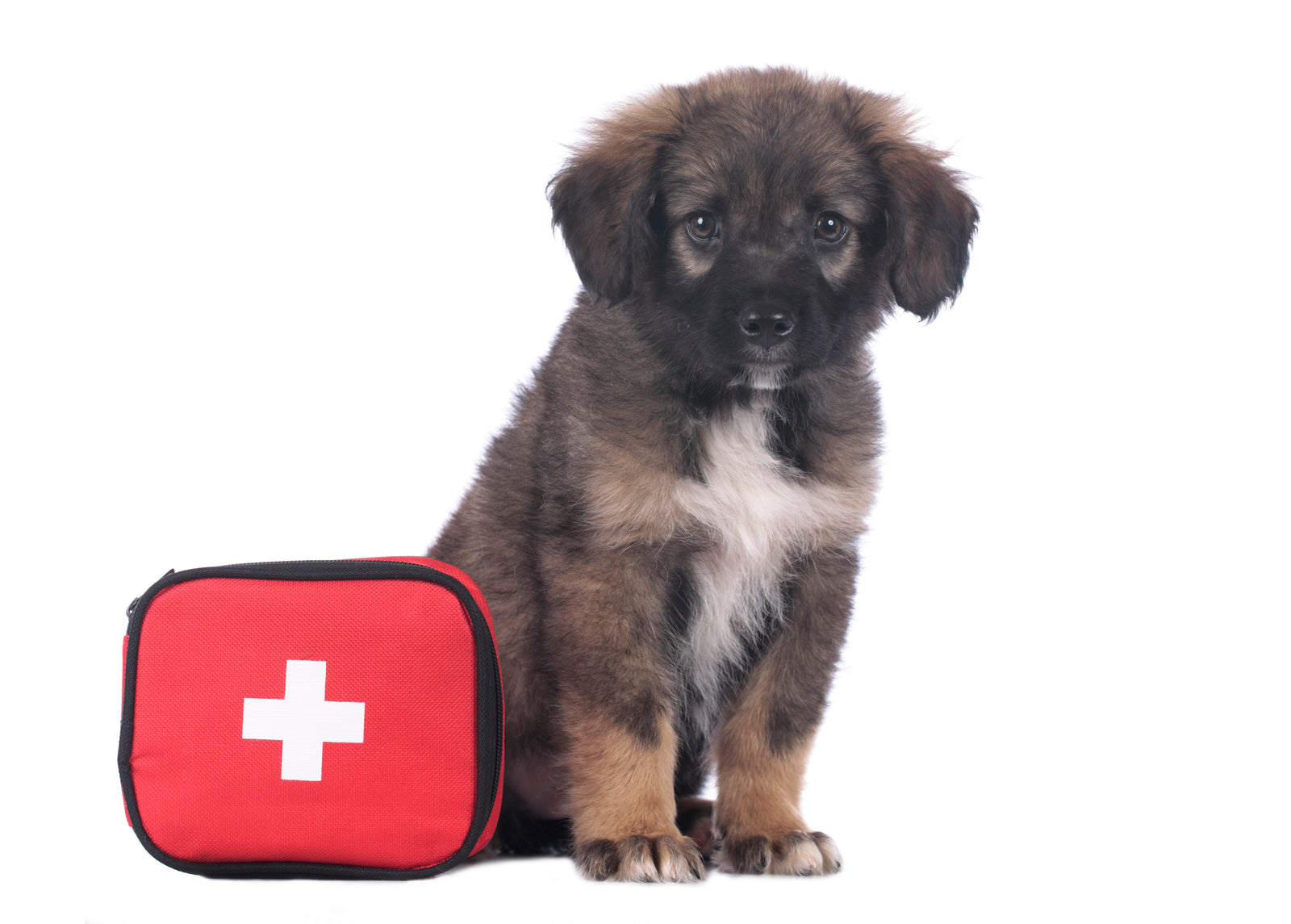There comes a time in every pet owner's life when their pet gets hurt. You can take steps to ensure that when that time comes, you are prepared to deal with an emergency medical situation.
First Aid Tips For Pet Owners
Here’s what you need to do to be prepared to provide first aid to your pet.
Create A First Aid Kit
Having a well-provisioned first aid kit can make all the difference in an emergency. Here’s a list of what your pet first aid kit should contain:
- Emergency Contact Card: Include numbers for your veterinarian, poison control, and an emergency veterinary hospital.
- Gloves
- Tweezers
- Nonstick Bandages
- Hydrogen Peroxide
- Thermometer
- Sterile Eye Solution
- Muzzle
The American Veterinary Medical Association has a full list of suggested pet first aid supplies here.
Learn How To Handle An Injured Pet

One of the first steps that a pet owner needs to take is to determine if it is safe to approach and handle an injured animal. Even the gentlest pets may bite or scratch when they are scared and hurt.
It’s normal to want to comfort your pet when they aren’t feeling well, however, refrain from hugging your pet. Avoid putting your face near their mouth. Approach them slowly and begin to examine them slowly.
If a muzzle needs to be used and one isn’t on hand, a towel or gauze can be used as a substitute. Never place a muzzle on a pet that is vomiting.
Prepare A Confined Area For Transportation
Once a pet is ready to transport to a veterinary hospital, it’s important to ensure that they are in a confined space so that they don’t further injure themselves. A collapsible crate is an excellent choice - easy to store and easy to set up quickly in case of an emergency.
Learn About Common Medical Situations & How To React
It’s important to know how to handle the most common medical emergencies appropriately. Here are a few examples:
Bleeding

Bleeding can be external bleeding or internal. You can work to control external bleeding by using clean gauze and applying pressure on the wound. It’s best to apply pressure for at least 3 minutes to help the clotting process. Excessive bleeding on a limb may require the use of a tourniquet.
Internal bleeding symptoms include bleeding from the nose, mouth, and urine. It’s important to keep your pet warm and rush them to the hospital if internal bleeding is suspected.
Heatstroke

Pets who are left in a car on hot days are at high risk of developing heatstroke. Signs of heatstroke include:
- Vomiting
- Diarrhea
- Excessive Drooling
- Incoordination
- Sudden Collapse
If you suspect that your pet is suffering from heatstroke, move them to a shaded and cool area. Place cool wet towels on their head and neck, but don’t cover their mouth or eyes. If possible, use a hose to pour cool water over their body to help them cool down. Then immediately take them to the nearest veterinary hospital.
Seizure
If your pet has a seizure, move them away from any furniture or walls that they could accidentally strike. Do not try to restrain them. If possible, time the length of the seizure - this is important information that your veterinarian will want.
After, approach your pet with caution. Seizures can cause pets to become very disoriented and they may bite out of fear.
Additional information on common pet emergencies can be found on the American Veterinary Medical Association website.
**Disclaimer: Pet first aid should never be a substitute for proper veterinary care. Once you have administered first aid, be sure to follow up with immediate veterinary care.
References:
American Veterinary Medical Association. (n.d.) Pet First Aid Supplies Checklist. https://www.avma.org/resources/pet-owners/emergencycare/pet-first-aid-supplies-checklist
American Veterinary Medical Association. (n.d.) Pet First Aid - Basic Procedures. https://www.avma.org/resources/pet-owners/emergencycare/pet-first-aid-basic-procedures
More stories

Doggie Dentistry - What You Need to Know About Your Dog's Teeth


